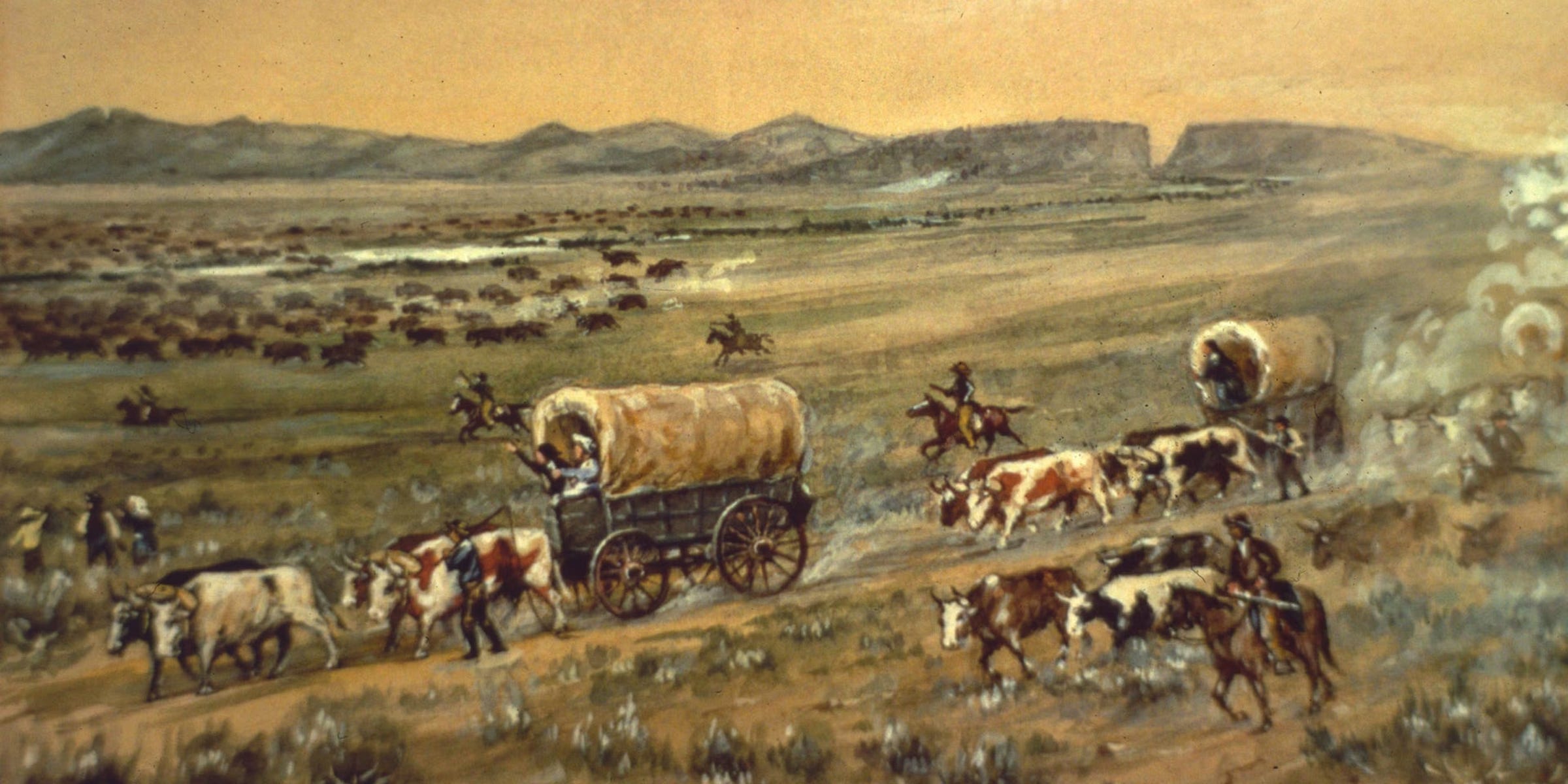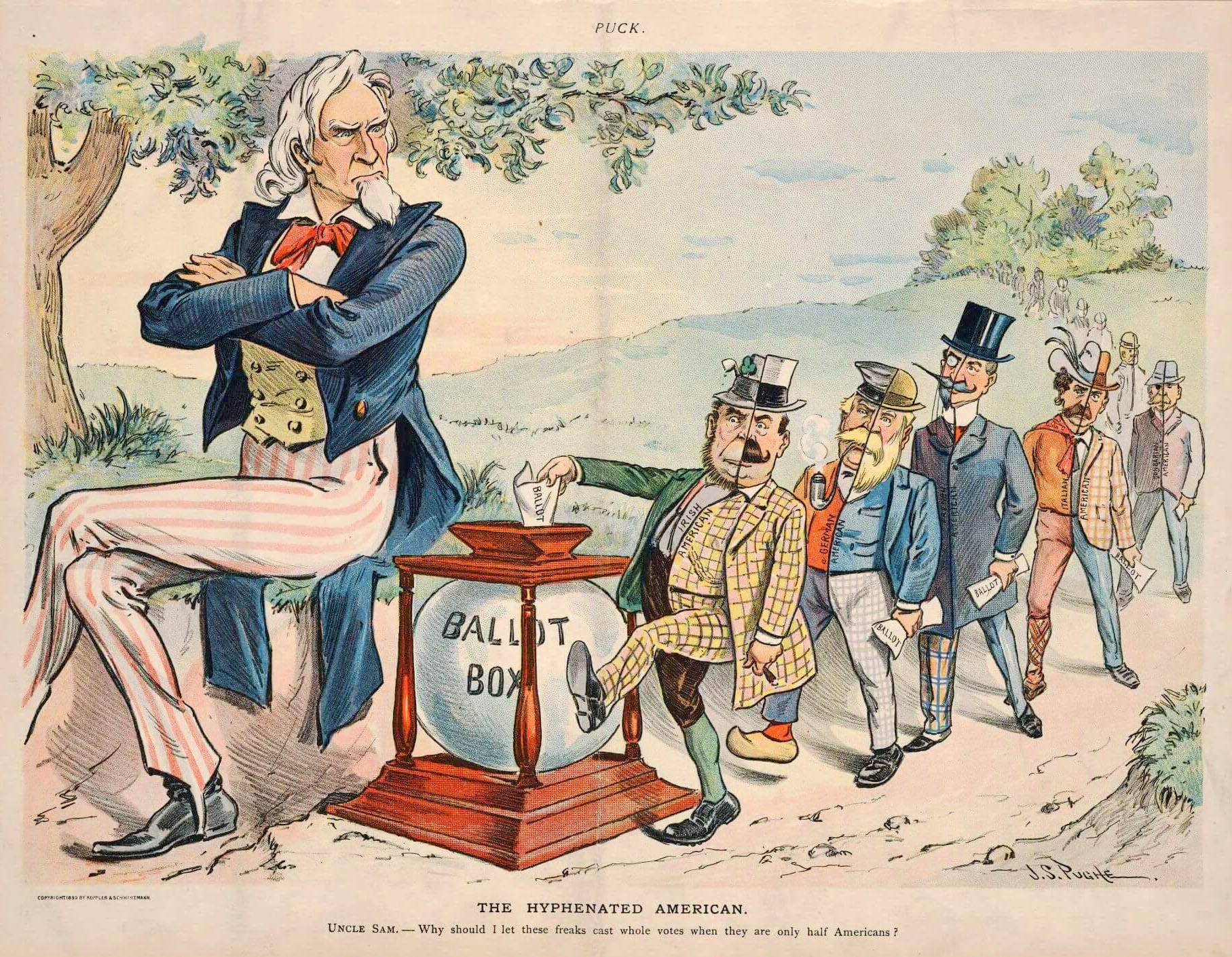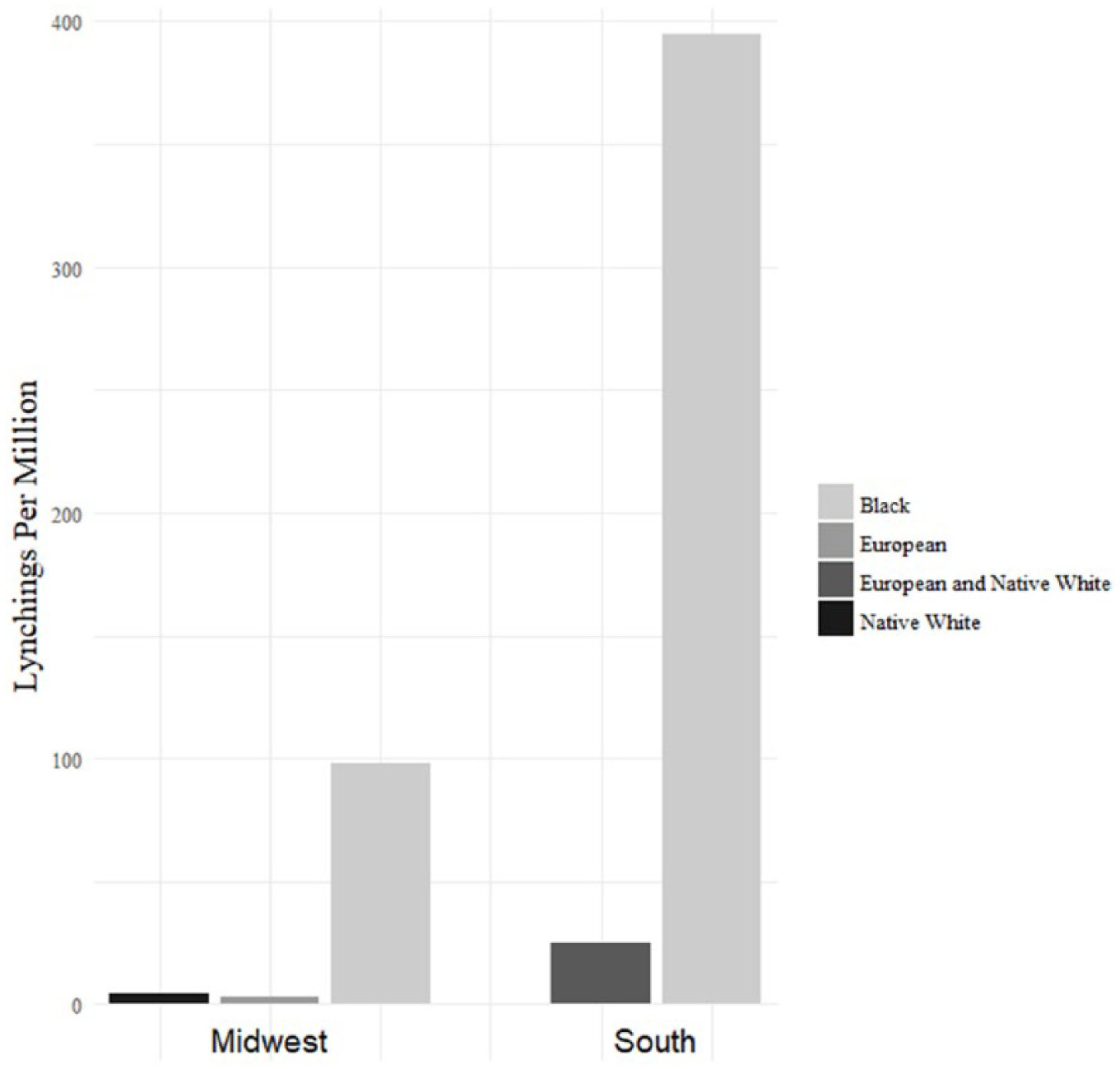European Immigrants Were Always Considered White
Debunking a motte-and-bailey-style myth that Americans considered immigrants from Europe to somehow be non-White
This was a timed post. The way these work is that if it takes me more than one hour to complete the post, an applet that I made deletes everything I’ve written so far and I abandon the post. You can find my previous timed post here.
The Irish are the blacks of Europe. So say it once, say it loud—I’m black and I’m proud.
The Commitments, 1991
There’s a popular belief that when various European immigrant groups arrived in the United States, they were regarded as if they weren’t White, despite clearly being considered White today. Therefore, at some point, they must have ‘become White’.
The most widely referenced text on this subject is Noel Ignatiev’s How the Irish Became White. In How, Ignatiev described the ways “the Catholic Irish, an oppressed race in Ireland, became part of an oppressing race in America”; a nation where “they commonly found themselves thrown together with free Negroes”.
In a similar vein, David Roediger’s Working Toward Whiteness argued that southern and eastern Europeans—including Italians—gradually underwent a transformation from a liminal in-between race to becoming full-fledged Whites. Matthew Frye Jacobson’s Whiteness of a Different Color argued that in the period 1840-1920, Americans believed in multiple European races, such as the Celtic, Hebrew, and Mediterranean, which were later folded into a broad “White” category.
When ideas such as these reach a wider audience, they’re bound to lose whatever nuance they might be argued to have. Nevertheless, the popular interpretation of these and similar works as alleging a fundamental perception of non-Germanic Europeans as non-White has been accepted in many corners. This perception is bolstered by readings from various historical anthropologists and biologists dubbed ‘race scientists’; off-handed remarks about and discrimination and nativism faced by European immigrants; and even by the writings of the Founding Fathers, such as Benjamin Franklin in Observations Concerning the Increase of Mankind, Peopling of Countries, &c.:
All Africa is black or tawny. Asia chiefly tawny. America (exclusive of the new Comers) wholly so. And in Europe, the Spaniards, Italians, French, Russians and Swedes, are generally of what we call a swarthy Complexion; as are the Germans also, the Saxons only excepted, who with the English, make the principal Body of White People on the Face of the Earth. I could wish their Numbers were increased. And while we are, as I may call it, Scouring our Planet, by clearing America of Woods, and so making this Side of our Globe reflect a brighter Light to the Eyes of Inhabitants in Mars or Venus, why should we in the Sight of Superior Beings, darken its People? why increase the Sons of Africa, by Planting them in America, where we have so fair an Opportunity, by excluding all Blacks and Tawneys, of increasing the lovely White and Red? But perhaps I am partial to the Complexion of my Country, for such Kind of Partiality is natural to Mankind.
Reading all of these sources and interpreting them in light of the theory that Whiteness was something different groups adopted, found cast upon them, or that they otherwise moved into and came to be perceived as, one could be fooled into thinking that people in the past genuinely considered European immigrants to be non-White. However, this belief has no basis in reality; it is, at best, wordplay, and at worst, a lie.
The wordplay angle comes in after you’ve decisively shown that these groups were not considered to be non-White. The idea becomes that they were ‘treated poorly, like non-Whites’, that they were considered second-class citizens, denied employment, abused, lynched, beaten, and prejudicially targeted for discrimination. While many European-origin groups did experience abuses after arriving in America, that is not equivalent to being considered non-White, and the suggestion of as much is just a motte to retreat to before returning to the bailey of ‘they were considered non-White’.
Simple Disproof of ‘the Non-White European Immigrant’
In an article I published last year, I provided recent interracial marriage statistics for the U.S. I noted recent increases in interracial marriage rates and discussed the historical background of the laws American once had that barred interracial marriage; notably: “These laws were never applied to bar marriage between European ethnicities, like the Irish and settler-descended Anglo-Americans.”
This alone should strongly disprove the notion of different European ethnic groups being perceived as non-White. We know that Italian immigrants married settler-descended Anglo-Saxons; we know that Irishmen and Irishwomen married colonial-era Dutchmen; we know that Jews married well outside of ethno-religious boundaries. Miscegenation laws were, however, frequently invoked to prevent marriages between Whites—of numerous European ethnicities—and members of other races such as Africans (Blacks) and the Chinese (Asians). In fact, one of the first miscegenation cases in the U.S. occurred two years after Maryland implemented their miscegenation laws, concerning the marriage of Irish-born Eleanor Butler and an African slave.
The law at the time stipulated that such a marriage would result in the free party voluntarily becoming a slave to the slave’s master, and having all of their children born into slavery. Butler agreed to those terms and lived out the rest of her life as a slave, giving birth to seven or eight children, all of whom were also slaves, and one of whom purchased their own manumission.
Across the U.S., anti-miscegenation statutes defined “White” across the White/non-White “color line”, implicitly including all Europeans on the White side in each case, without exception.
Beyond the fact that miscegenation laws never considered European immigrants to be non-White, we also have observations like that citizenship put all Europeans squarely in the “White” bucket. From the first federal naturalization statute onward, eligibility was for “free white persons”; after 1868, persons of African descent who were in the U.S. due to slavery were also extended citizenship, but Asians remained barred until the mid-20th century. But European immigrants were always eligible.
Courts also repeatedly affirmed Middle Eastern and European-descended groups as legally “white”. Syrians were affirmed as White in Dow v. United States; Finns were affirmed as White in In re John Svan; Armenians were affirmed as White in In re Halladjian, and later in U.S. v. Cartozian; contrarily, the Japanese (Ozawa v. United States) and Indians (United States v. Thind) were affirmed as not being White. Classification for the purpose of naturalization was abundantly clear that all Europeans including European Jews were White, and there lies the color line, with each European ethnicity inside it.
The Census also counted every European ethnicity as White from early on. Federal census instructions and official histories classified immigrants from Europe as “White/Caucasian” while creating separate categories for “Negro”, “Indian”, “Chinese”, “Japanese”, etc., as in the 1930 schedule. Similarly, racial covenants used “Caucasian only” in their language. Deeds and HOAs restricted ownership to the “Caucasian race”, to the exclusion of “Negro or Mongolian” persons—once again, a formula including all Europeans. Property and immigration regimes targeted non-Whites, not Europeans. Alien land laws barred “aliens ineligible to citizenship”, which was a proxy aimed at deterring Asians. European immigrants were always eligible and not so targeted. The Immigration Act of 1924 likewise favored European immigration via national origin quotas, while barring Asians outright.
Jim Crow statutes divided pupils into “white” and “colored”, and European-origin children all attended the White schools. The Supreme Court even upheld classifying a U.S.-born Chinese child as “colored” in Lum v. Rice, thus underscoring that “white school” referred to the European-descended category. Related segregation laws and practice also put Europeans into “white” cars, gave them access to “white” entrances to buildings, and so on. Europeans rode as “white” passengers, rather than “colored” ones. Southern “white primaries” excluded Black voters by rule, but European-origin citizens were simply part of the White electorate until Smith v. Allwright ended them outright.
There were testimony and civil status laws that defined who could testify against whom. California’s People v. Hall barred Chinese people from testifying against Whites, demarcating “white” as a distinct category from Asians. No such racial testimonial disabilities were ever applied to Europeans, and they were able to testify against non-immigrant Whites freely.
U.S. military forces were segregated into “white” versus “colored” units, and European immigrants always fell on the White side of that divide. In the Civil War era, they did this in the Union, and while there were units composed entirely of members of certain European ethnicities, that generally occurred due to language difficulties, and they were nevertheless still frequently integrated with native Whites. A telling example of the acceptance of groups like Italians as Whites comes from the time Lincoln offered Giuseppe Garibaldi the rank of Major General in the Union Army. Lincoln ultimately failed to recruit him because Lincoln refused to declare that the point of the Civil War was the abolition of slavery.
More impressively, the Confederates clearly considered European immigrants to be White. Non-Whites were not permitted to serve in the Confederate Army as combat troops by law. While some Blacks were sometimes used for camp labor, they were not allowed firearms. Italians, on the other hand, were clearly not regarded as non-White, since they were provided with the opportunity to form battalions such as the Garibaldi Legion, which the government fully equipped.
Lynching and the Color Line
Clear evidence of the Whiteness of European immigrants comes from lynchings—a true test of group identification by way of serious extrajudicial and extralegal violence! On this subject, a somehow little-known fact is that lynchings were not reserved for Blacks. They were overwhelmingly applied to Blacks, but in areas with few of them, lynchings primarily—and practically tautologically—targeted Whites.
The South received relatively small numbers of immigrants, so lynchings of European immigrants in that region were thrown together with lynchings of other Whites. In the Midwest, data was available to distinguish between the two groups of Whites, and there we can clearly see that European Whites were not particularly notable targets for lynching.
The evidence from this non-institutional violence is clear: “European immigrants… enjoyed the protections of whiteness with respect to the extralegal and extra-institutional violence of lynching. European immigrants were lynched at similar rates to native whites, far less often than blacks, and generally without the ritual spectacle that black victims often suffered.” Moreover, if “Europeans had been denied the protections of whiteness as some research has suggested, and the boundaries of whiteness had later expanded to include them, we might expect that these boundaries will expand to include other groups in the future. Our research suggests, however, that the white/nonwhite color line was not blurry in this respect, and European immigrants were clearly on the white side of that line.”
There were definitely notorious lynchings of Europeans, such as the 1891 New Orleans lynchings, in which eleven Italians were lynched for the alleged murder of the city’s Irish Catholic police chief, but there was no sustained regime of lynchings aimed at Europeans as a racial class. Moreover, groups like Italians were—to quote from Thomas Guglielmo’s White on Arrival, “so securely white, in fact, that [they] rarely had to aggressively assert the point.” Quoting:
Italians’ many perceived racial inadequacies aside, they were still largely accepted as white by the widest variety of people and institutions—naturalization laws and courts, the U.S. census, race science, anti-immigrant racialisms, newspapers, unions, employers, neighbors, realtors, settlement houses, politicians, and political parties. This widespread acceptance was reflected most concretely in Italians’ ability to naturalize as U.S. citizens, apply for certain jobs, live in certain neighborhoods, marry certain partners, and patronize certain movie theaters, restaurants, saloons, hospitals, summer camps, parks, beaches, and settlement houses. In so many of these situations… one color line existed separating “whites” from the “colored races”—groups such as “Negroes,” “Orientals,” and sometimes “Mexicans.” And from the moment [Italians] arrived in Chicago—and forever after—[they] were consistently and unambiguously placed on the side of the former. If Italians were racially undesirable in the eyes of many Americans, they were white just the same.
The truth is that the notion of a constructed White race that different groups have been given entry to is just a divisive academic device lazily conflated with the commonsensical perception of people being White. The motivation behind such a device is to delegitimize one of the racial categories people intuitively understand and perceive, for political and ideological reasons. These efforts can and should be treated as cynical obscurantism and on such a basis, rightly and roundly ignored. The plain fact is that White people—and we all know who they are—are White, and that’s that.
Postscript
This section added after posting the initial article.
A friend sent me an article that reviewed this topic. It came to the same conclusion I did:
We have found no evidence to support the “becoming white” thesis in terms of change in the official racial classifications of these groups in the record of social institutions such as U.S. censuses, naturalization laws, and court cases. Non-Anglo-Saxon European groups arrived in America as whites, and there was no need for them to be reclassified as whites. U.S. census questionnaires provide no evidence of reclassifications for these European groups, and U.S. naturalization laws and U.S. courts always treated these Europeans as “free white persons” eligible for U.S. citizenship.
It then explains how people have been able to make their case that changes occurred: by exploiting lexical ambiguity. Long ago, people used the term “race” to mean “ethnicity”, and this has been capitalized on by scholars arguing that different groups became White, even though they were consistently officially and socially categorized as White.
One can easily find such phrases as “the Irish race,” “the German race,” “the Dutch race,” “the Swedish race,” “the Jewish race,” “the Italian race,” “the Mexican race,” “the Chinese race,” and the like in early publications prior to 1950. In these usages, race carried roughly the meaning of today’s ethnicity based on culture or national origins, although at times it could conflate with physical attributes just as ethnicity did.
And then:
Changes in the meaning of race in U.S. racial and ethnic lexicon explain why there is a discourse on how these non-Anglo-Saxon European immigrant groups changed their “races” to white. One may still argue that “becoming white” did happen to these non-Anglo-Saxon European immigrant groups, but the real meaning of “becoming white” for these groups was a change in social status from a minority group to part of the majority or dominant group.
And, to top off this article—which is about the errant idea of European immigrants being racially misclassified as non-White—we have the following quote:
Our analysis suggests that “becoming white” carries different meanings: change in racial classification, and change in majority/minority status. In terms of the former, “becoming white” for non-Anglo-Saxon European immigrant groups is bogus. Hence, the argument of Eric Arnesen (2001), Aldoph Reed (2001), Barbara Fields (2001), and Thomas Guglielmo (2003) that the Irish, Italians, and Jews were white on arrival in America is vindicated.






This is really poorly argued, to the point where it's clear you don't really know what you're talking about.
Yes, there was generally no legal category that distinguished between "settler-descended whites" and later European migrants. (Though it really depends on the time period.) But the point that Roediger et al make is that there were social gradations within a broad "white" category. "White" was understood to mean "not black and not red [i.e. American Indian]." Uner the Treaty of Guadalupe Hidalgo Mexican-Americans were classified as white. In fact the "white" category was so ambiguous in the nineteenth century that the Siamese twins Chang and Eng Bunker, who were not European at all, were legally classified as white in antebellum North Carolina, married white women, and owned slaves.
On your intermarriage argument that "'these laws were never applied to bar marriage between European ethnicities, like the Irish and settler-descended Anglo-Americans'." Yes, and in many Northern states there were no laws against the intermarriage of whites and blacks either! But obviously whites and blacks were considered separate races in the North regardless. Whatever the law unions of whites and blacks were exceptionally uncommon, just as in 1880 unions of Jews and WASPs or Italians and WASPs were exceptionally uncommon. (They occasionally occurred, obviously, because many things occur. There were also occasional white-black unions.) The existence or non-existence of laws prohibiting marriages between two groups doesn't really tell us if a group is considered white or not.
Your lynching evidence is extremely unconvincing. Lynching was overwhelmingly a Southern phenomenon but you don't have any data for immigrant/non-immigrant differentials in the South, so you look at the Midwest ... where the number of lynchings was so minuscule that making any point about the status of Irish/Italians/Jews etc from that data is extremely stupid. (The Tuskegee data source you cite says that in the entire 86-year period they cover, there were a total of 93 lynchings of white people total across the core Midwestern states of Michigan, Wisconsin, Iowa, Minnesota, Ohio, Indiana, and Illinois, so in the entire Midwest about one lynching of a white person per year for that period. How can you possibly reason off of that? I thought you were a statistician of some kind!)
I could go on but this is just a terribly argued post. Irish/Italian/Jewish immigrants to the US really were in a liminal category between white and non-white. Anyone who's studied US history can tell you that! Read primary sources, like the Southern travelogues of the landscape architect Frederick Law Olmsted (who talks about how slaves often got better treatment than Irish laborers). There was a popular joke among slaves in the South: "My master is a great tyrant. He treats me as badly as if I was a common Irishman."
Cremieux coming in hot with the receipts. Excellent essay and research.